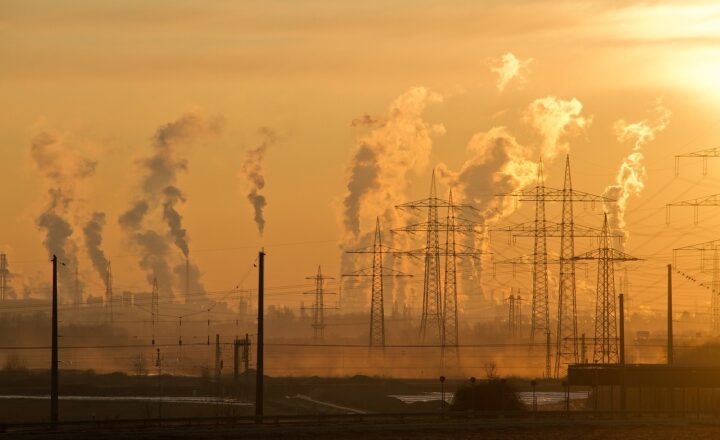The Effects of Air Pollution on Children’s Health
November 10, 2024

Air pollution is one of the most pressing environmental issues today, and its effects are particularly concerning for vulnerable populations, especially children. Young children are not only more susceptible to health problems caused by polluted air, but their developing bodies and immune systems can amplify these risks. In this comprehensive article, we will explore the various ways air pollution affects children’s health, the long-term consequences, and what steps can be taken to mitigate these risks.
1. Understanding Air Pollution
Air pollution refers to the presence of harmful substances in the atmosphere, resulting from human activities such as industry, transportation, and agriculture. Common air pollutants include particulate matter (PM), nitrogen dioxide (NO2), sulfur dioxide (SO2), ozone (O3), and volatile organic compounds (VOCs). These pollutants can originate from vehicle emissions, factory discharges, agricultural practices, and more. Exposure to these substances can have a dire impact on health, particularly for children.
2. How Children are Affected by Air Pollution
Children are more vulnerable to the effects of air pollution due to several factors:
- Higher Respiratory Rates: Children breathe faster than adults, inhaling more air (and pollutants) per pound of body weight. This increased intake amplifies their exposure to harmful substances in the air.
- Developing Organs: Their lungs and brains are still developing, making them more susceptible to injuries from pollutants that can lead to chronic health issues later in life.
- Outdoor Activities: Children are often more active outdoors, where they may be exposed to higher levels of pollutants, particularly in urban areas during peak traffic times or under certain weather conditions that trap pollutants close to the ground.
3. Health Risks Associated with Air Pollution
The health effects of air pollution on children are both immediate and long-term. Here are some notable concerns:
Respiratory Issues
Children exposed to polluted air are at a higher risk of developing respiratory problems. These can include asthma, bronchitis, and chronic coughs. Studies have shown that children living in areas with high levels of air pollution exhibit more severe symptoms and more frequent asthma attacks.
Cognitive Development
Research indicates that air pollution can impair cognitive development in children. Pollutants such as lead and other heavy metals can affect brain function and may result in reduced IQ and learning disabilities.
Cardiovascular Problems
Emerging studies suggest that air pollution can lead to cardiovascular problems, even in young children. Exposure can lead to changes in blood pressure and heart function, which could have lifelong implications for heart health.
Immunity Issues
Air pollution can weaken the immune system, making children more susceptible to diseases and infections. This can lead to higher frequencies of common illnesses such as flu and other infectious diseases.
Neurological Disorders
Emerging evidence suggests a link between air pollution and neurodevelopmental disorders such as ADHD. Long-term exposure may affect behavior, attention span, and impulse control in children.
4. The Long-term Consequences of Air Pollution
The short-term effects of air pollution can lead to long-lasting consequences. Chronic respiratory issues developed in childhood can extend into adulthood, while cognitive impairments can affect educational performance and professional success. There is also evidence linking childhood exposure to air pollution with a greater risk of cardiovascular diseases and diabetes later in life.
5. Making a Difference: Reducing Air Pollution for Children
To protect children from the harmful effects of air pollution, a multi-faceted approach is necessary:
Advocacy for Cleaner Air
Engaging in community efforts to advocate for cleaner air regulations is crucial. Local advocacy groups can push for cleaner emissions from vehicles, better industrial regulations, and increased green spaces in urban environments.
Education and Awareness
Educating parents, teachers, and children about the dangers of air pollution and ways to reduce exposure is critical. Understanding when pollution levels are high and minimizing outdoor activities during those times can help.
Promoting Green Transportation
Encouraging the use of public transport, carpooling, biking, and walking helps reduce the number of vehicles on the road, directly impacting air quality.
Indoor Air Quality
Ensuring clean indoor air is also essential. Using air purifiers, keeping homes dust-free, and avoiding tobacco smoke indoors can reduce the harmful effects of airborne pollutants.
Conclusion
Air pollution remains a significant threat to children’s health. The immediate and long-term effects can have considerable implications on respiratory function, cognitive development, and overall health. Understanding these effects is the first step toward advocating for cleaner air and implementing protective measures for our children. By working collectively to reduce air pollution, we can ensure that future generations are healthier and can thrive in a safer environment.
If you are a parent or guardian, take the initiative to educate your children about air quality, and advocate for change within your community. Together, we have the power to create a healthier future for every child.







